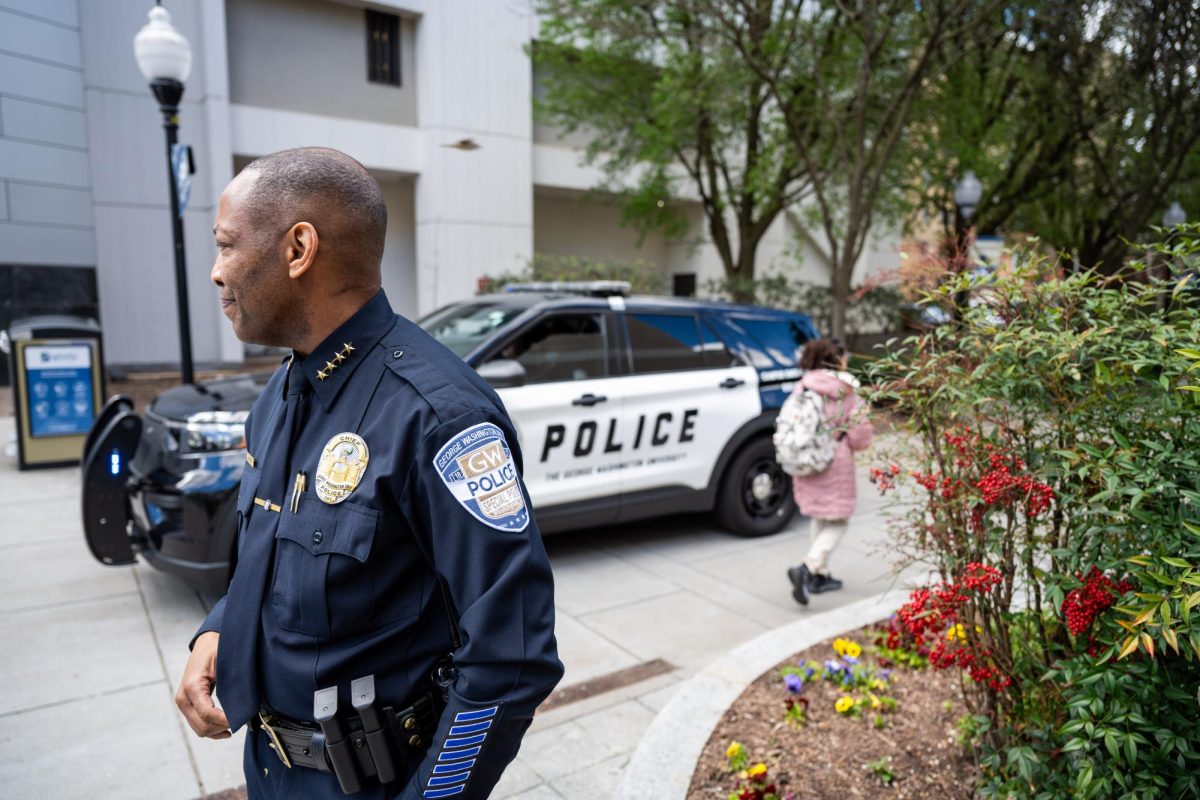
Correction appended.
This post was written by Hatchet Staff Writer Monica Mehta.
Students took campus sustainability into their own hands at the end of last month, planting 23 new trees on the Foggy Bottom campus.
The effort was part of the American Bar Association’s initiative to plant one million trees across the nation by 2014. The Environmental Law Association, a graduate student group, partnered with local nonprofit Casey Trees, the University’s Office of Sustainability and undergraduate students in the pre-law association and Green GW to bring the greenery to campus.
Pro-bono coordinator for the Environmental Law Association and second-year law student Lauren Eckhardt said community outreach is essential for students who spend much of their time tucked away in a library.
“It’s more of a statement of sustainability, preserving what we have and making D.C. a greener city as a whole,” Eckhardt said.
The groups and Casey Trees – committed to restoring the District’s tree canopy – planted Zelkovas, Chinese elm and willow oak trees. The new greenery was added to the center of the Foggy Bottom Campus, on F, G, and I streets between 20th and 23rd streets.
The trees are better suited for an urban environment than existing maple trees – which need more room for root growth – and are categorized as “street trees” by the Urban Forestry Administration.
“It’s harder with street trees because they don’t have an open tree box like you would find in Rock Creek Park, where trees have room to grow their roots and are healthier… Street trees are competing with cement and pollution, so it’s really important in the first year to take care of those trees,” Caitlin Carroll, the planning and design project assistant for Casey Trees, said.
GW’s grounds management department will oversee the watering and care of the newly planted trees.
The Environmental Law Association funded the project with University dollars allocated to Casey Trees earlier this academic year. This is the fifth year GW has partnered with Casey Trees to bring more trees to campus.
“From planting more than 150 new trees to completing surveys of our existing trees to funding for interns to help watering trees during summer months, GW’s partnership with Casey Trees is a win-win for the University, the neighborhood and the city as a whole,” Sophie Waskow, GW’s sustainability project facilitator, said.
The University has a 10 percent tree canopy – significantly lower than the 35 percent canopy of the overall District and the 26 percent tree canopy at American University. D.C. officials set a goal in 2009 to increase the canopy to 40 percent by 2035. A larger canopy can foster tourism, healthier air, shade and even reduce crime, according to the Casey Trees’ website.
“It’s important for GW as an educational institution to enhance the tree canopy in order to protect the environment, improve storm water management and increase property value,” Carroll said.
This post was updated March 5, 2012 to reflect the following:
The Hatchet incorrectly identified Caitlin Carroll as a planting and design project assistant. In fact, she is the planning and design project assistant. The Hatchet also incorrectly reported that Carroll referenced an “open tree block.” She referred to an “open tree box.”




